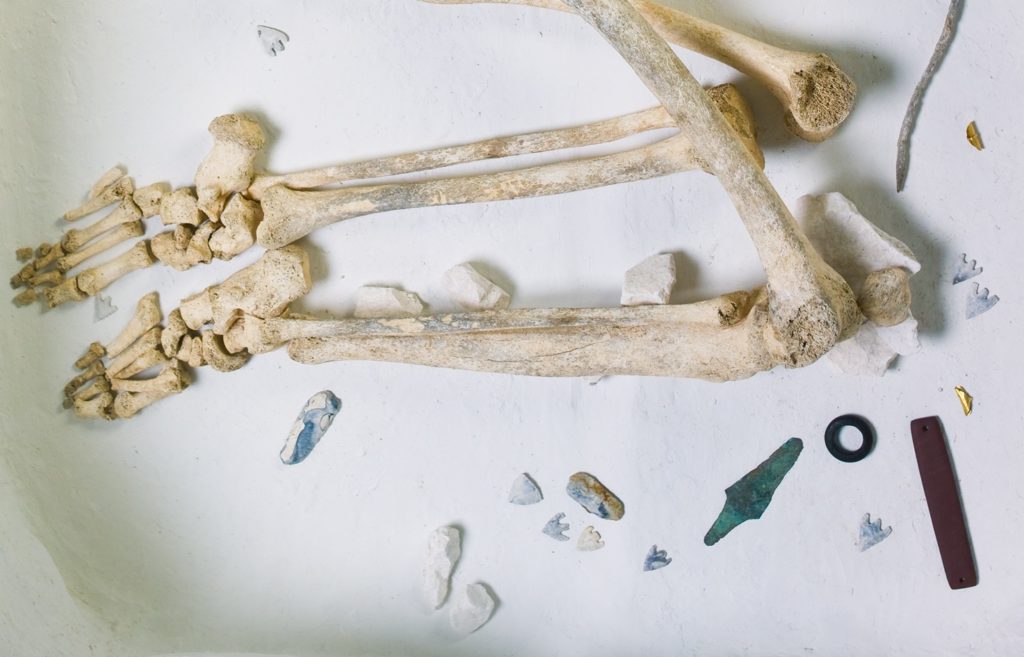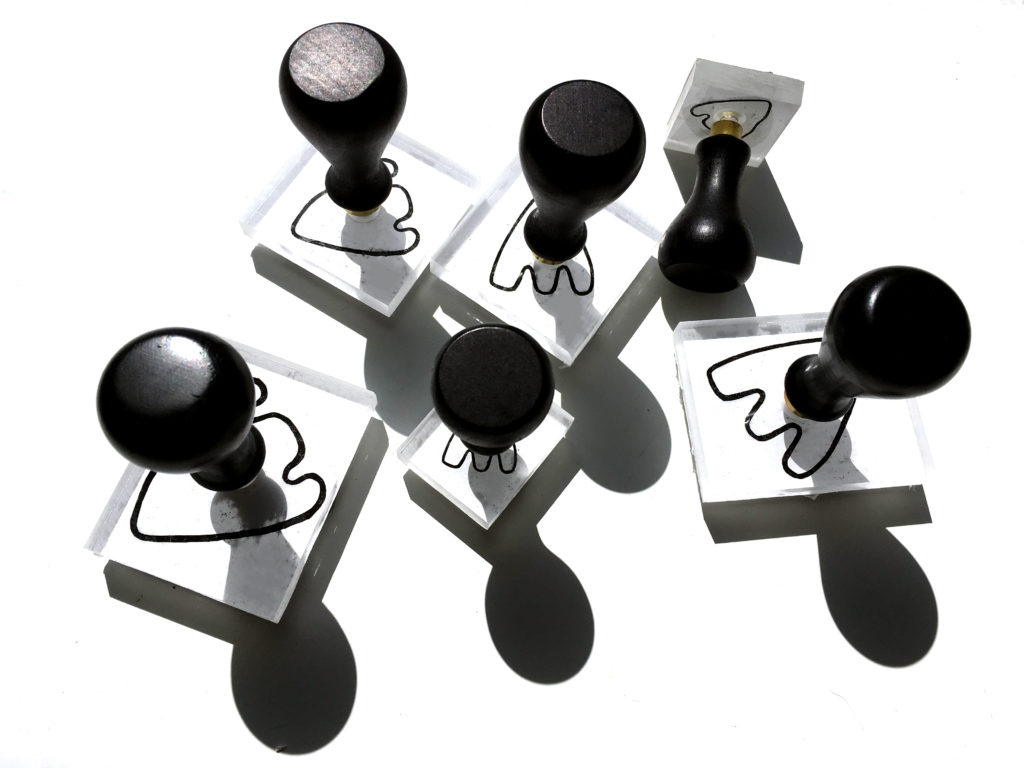
Home » Our work » Exhibitions » Alchemy exhibition » Archer
Ann-Marie James’ inspiration for Archer came from arrowheads found in the 4,000-year-old grave of the ‘Amesbury Archer’. The barbed arrowheads demonstrate flint-working at its best, but the design is brutal – the barbs ensured that the arrowhead would not fall out, so the prey animal would bleed to death.
These flints were part of a large hoard of ceremonial objects in the grave. Find out more about the Amesbury Archer here.
“The arrowheads interested me because they were made from flint, which involved a great deal of expertise, care and craftsmanship. This feels in some way at odds with the brutality of their purpose.”
Ann Marie chose two arrowheads for the Archer series, and began by making simple line drawings. She then created rubber stamps in a range of sizes. Using the stamps with white and gold ink, she built the composition of each painting, which she then worked into using acrylic paint and 24ct gold leaf.



| Cookie | Duration | Description |
|---|---|---|
| cookielawinfo-checkbox-analytics | 11 months | This cookie is set by GDPR Cookie Consent plugin. The cookie is used to store the user consent for the cookies in the category "Analytics". |
| cookielawinfo-checkbox-functional | 11 months | The cookie is set by GDPR cookie consent to record the user consent for the cookies in the category "Functional". |
| cookielawinfo-checkbox-necessary | 11 months | This cookie is set by GDPR Cookie Consent plugin. The cookies is used to store the user consent for the cookies in the category "Necessary". |
| cookielawinfo-checkbox-others | 11 months | This cookie is set by GDPR Cookie Consent plugin. The cookie is used to store the user consent for the cookies in the category "Other. |
| cookielawinfo-checkbox-performance | 11 months | This cookie is set by GDPR Cookie Consent plugin. The cookie is used to store the user consent for the cookies in the category "Performance". |
| viewed_cookie_policy | 11 months | The cookie is set by the GDPR Cookie Consent plugin and is used to store whether or not user has consented to the use of cookies. It does not store any personal data. |

Males great bustards perform spectacular courtship displays, gathering at a ‘lek’ or small display ground to try to impress the females.
The great bustard has a dignified slow walk but tends to run when disturbed, rather than fly.
The hen-bird on display at The Salisbury Museum was one of the last great bustards to be eaten in the town!